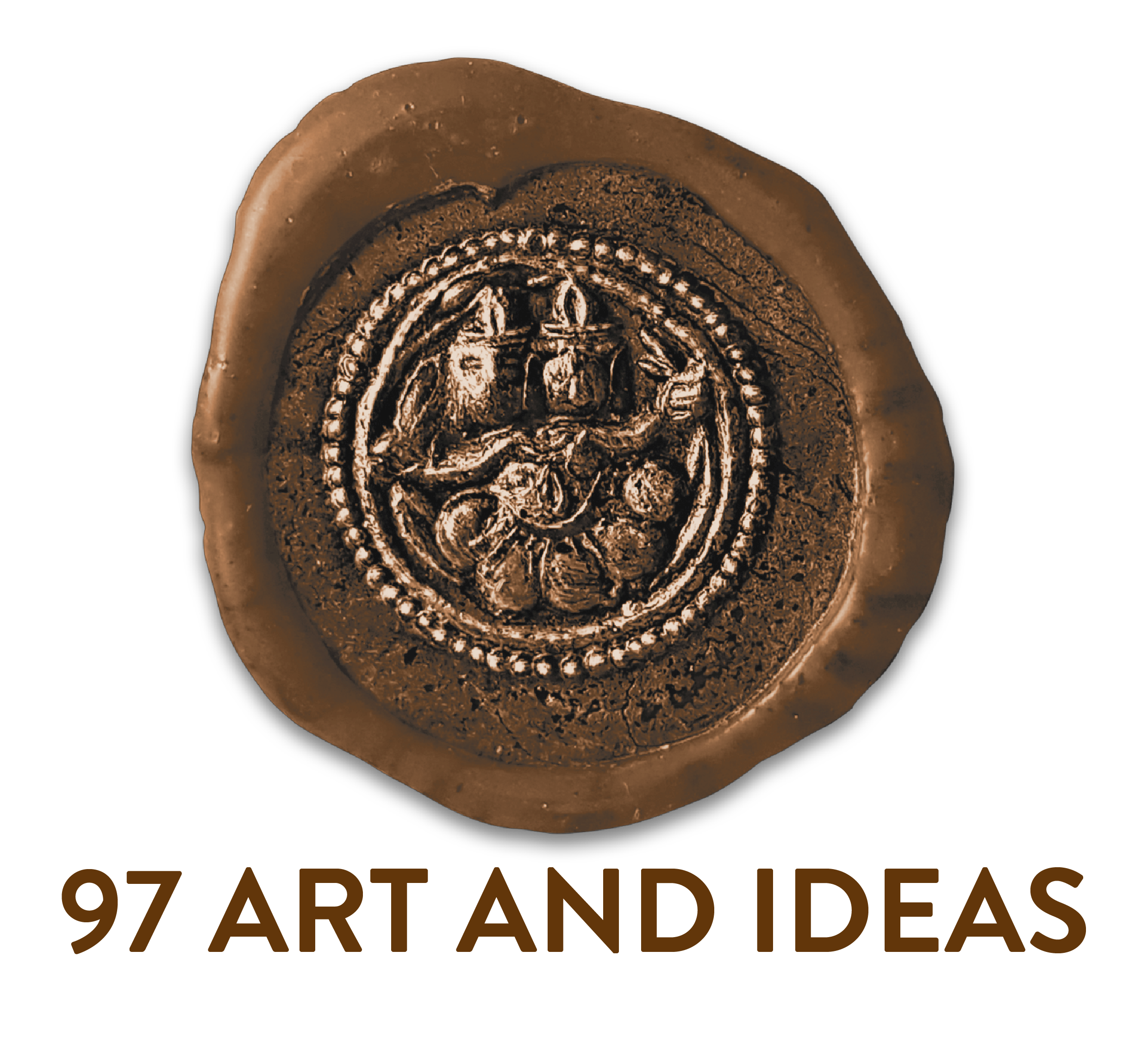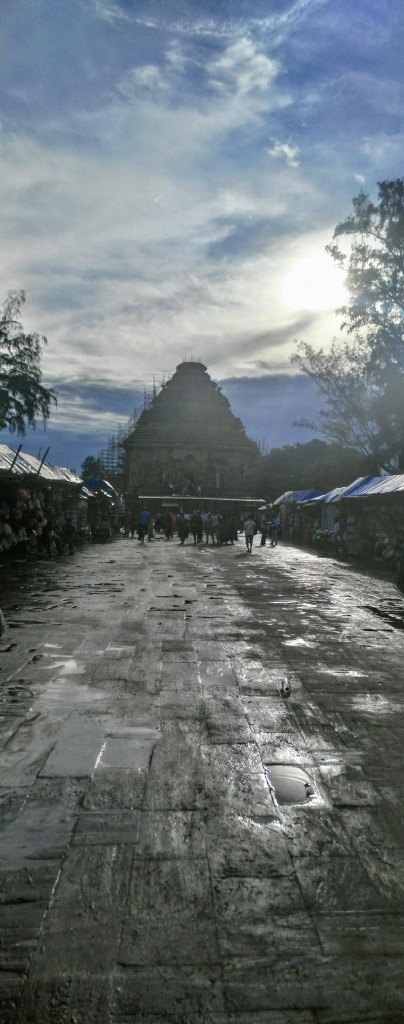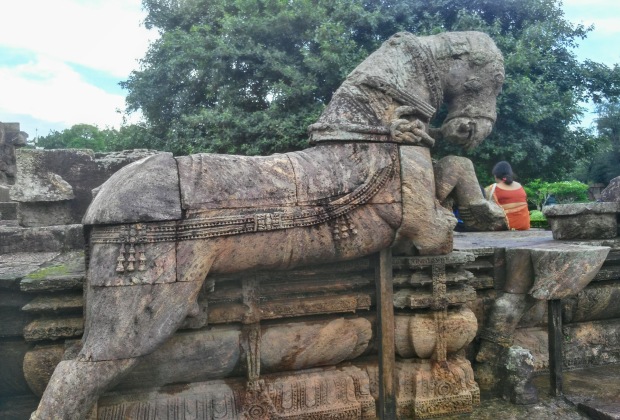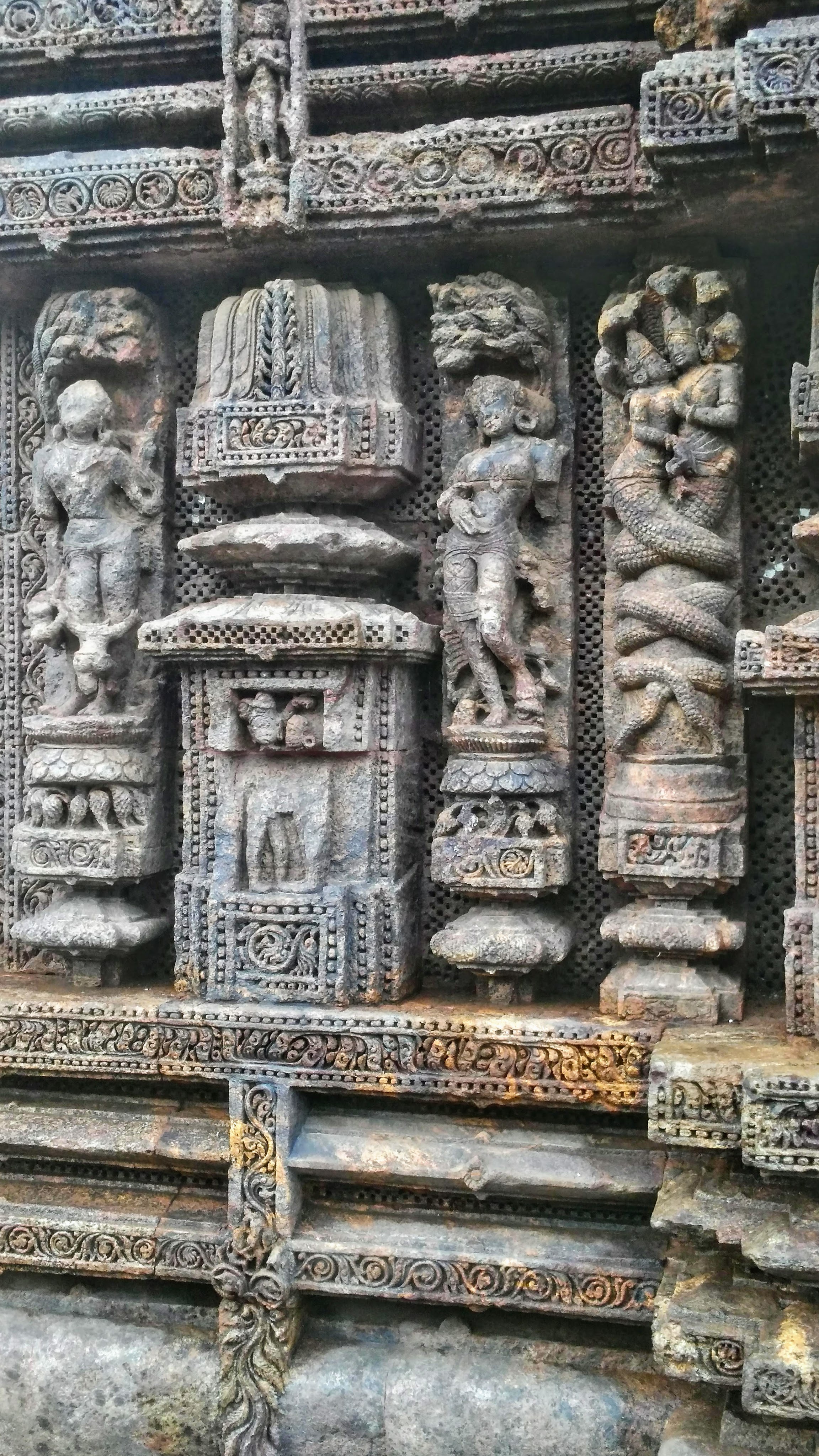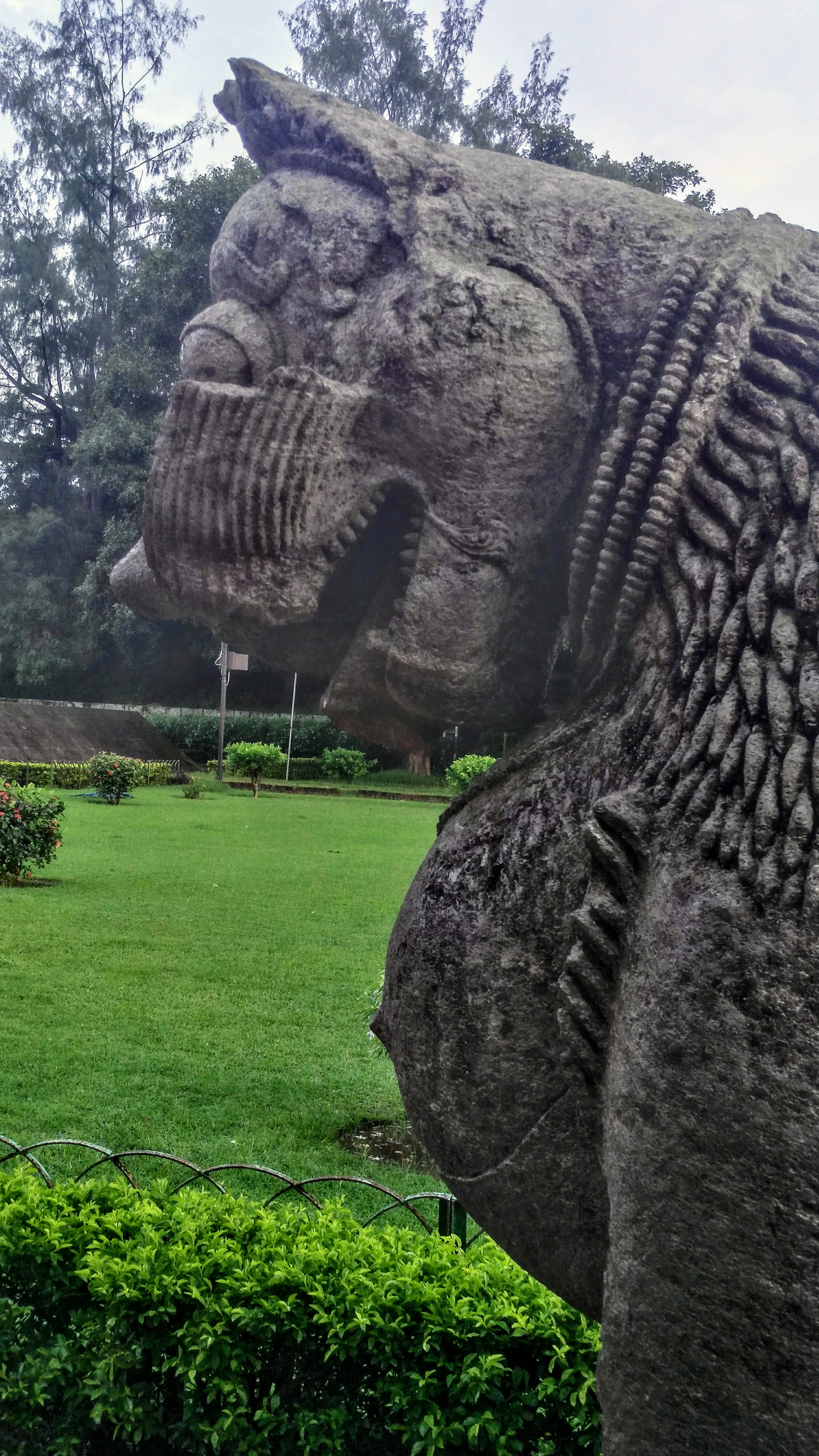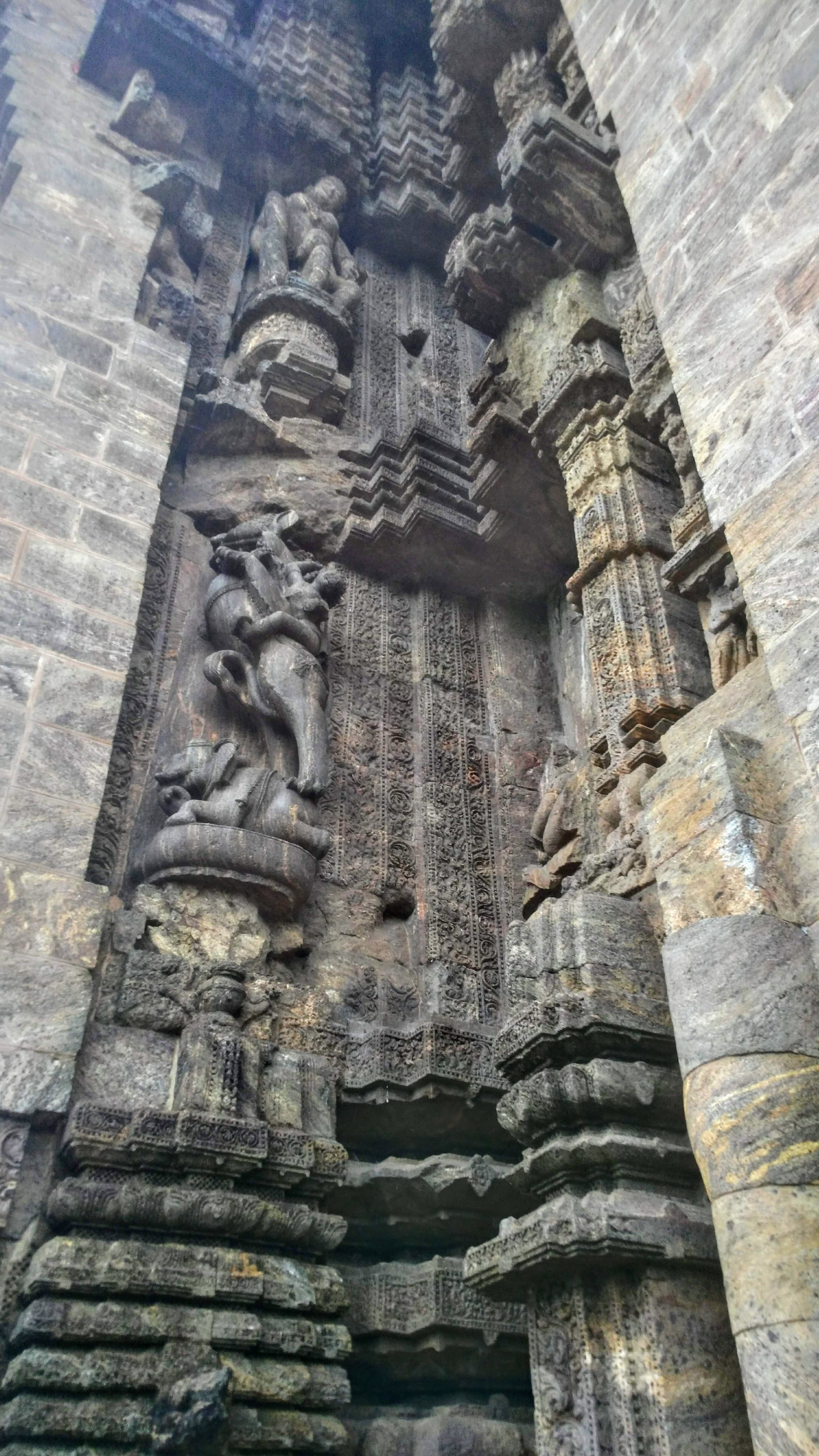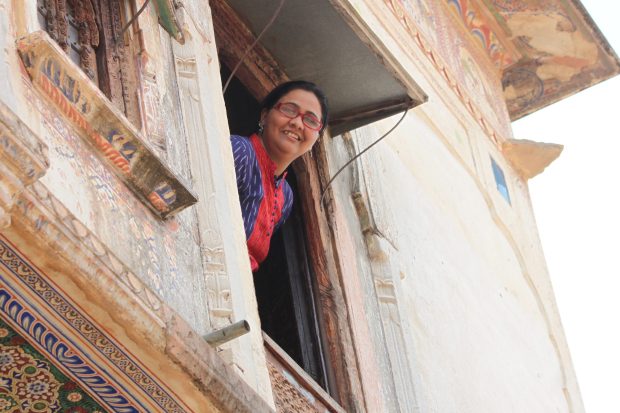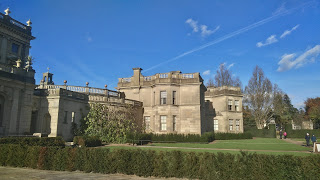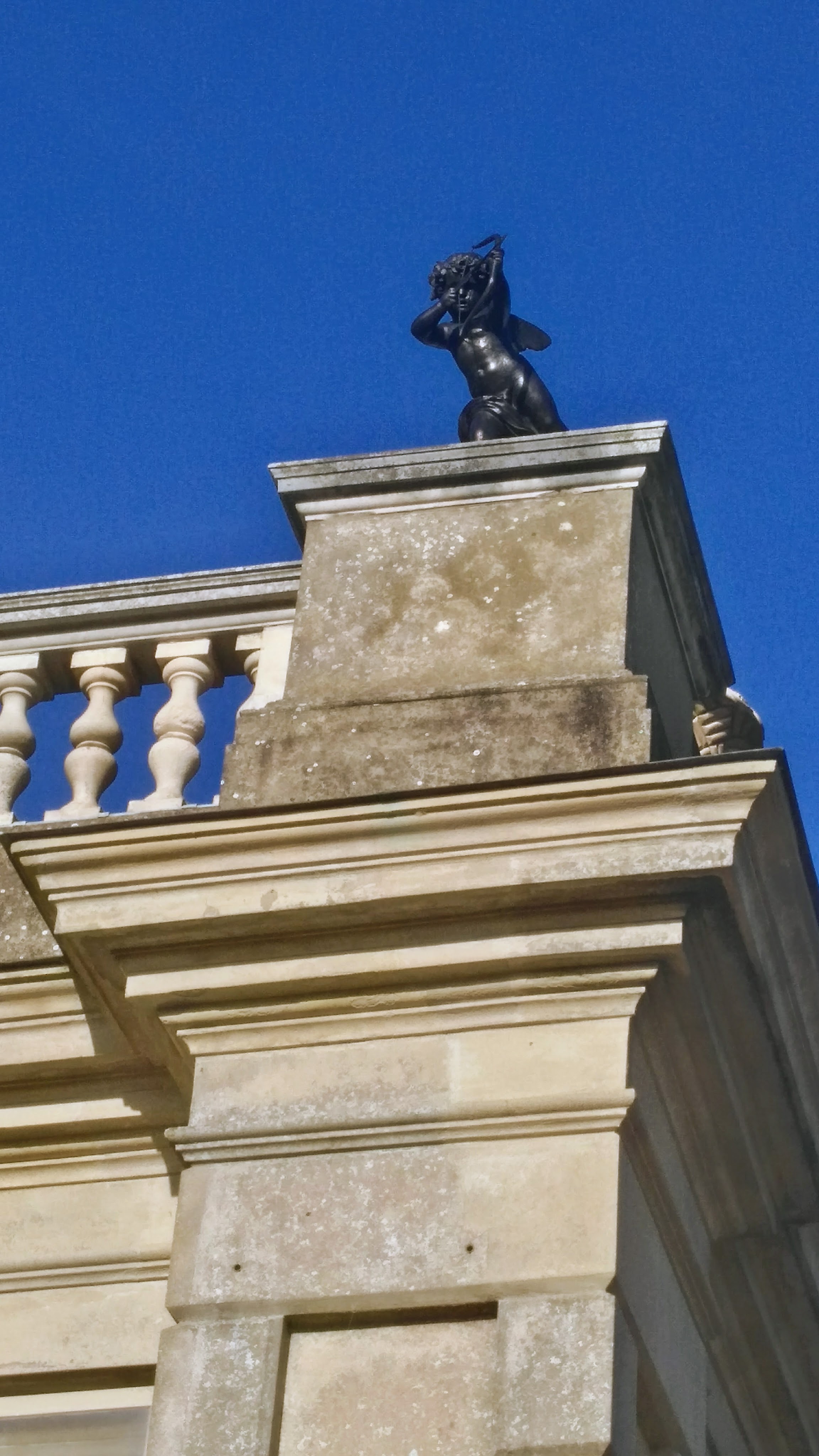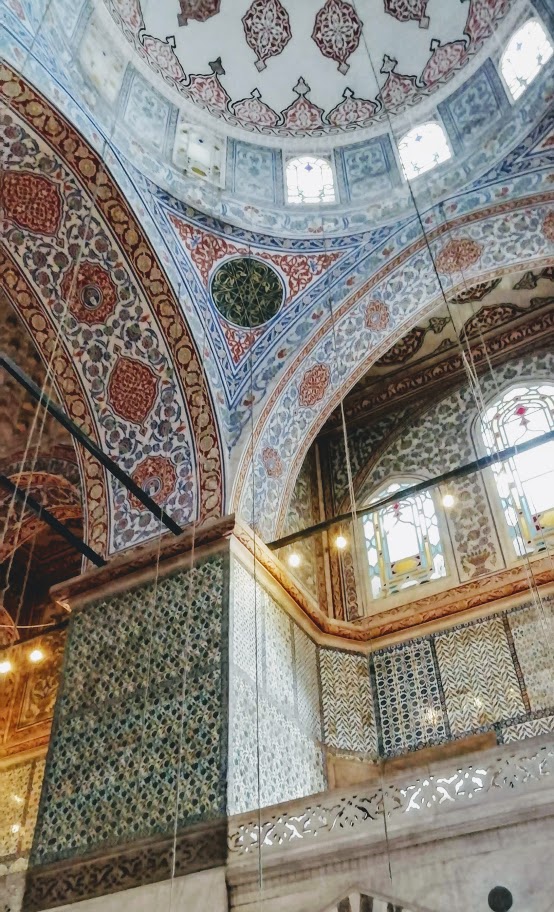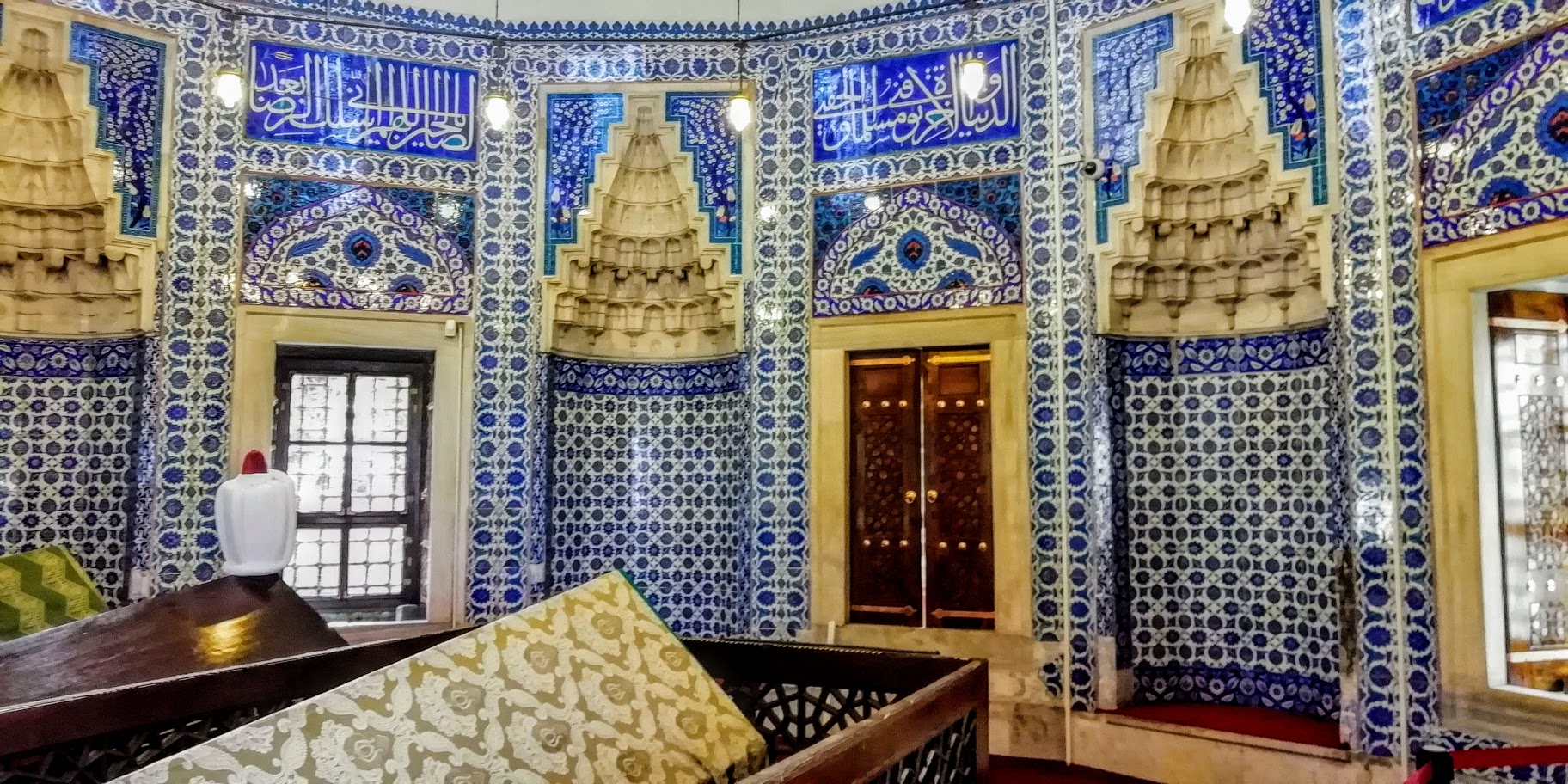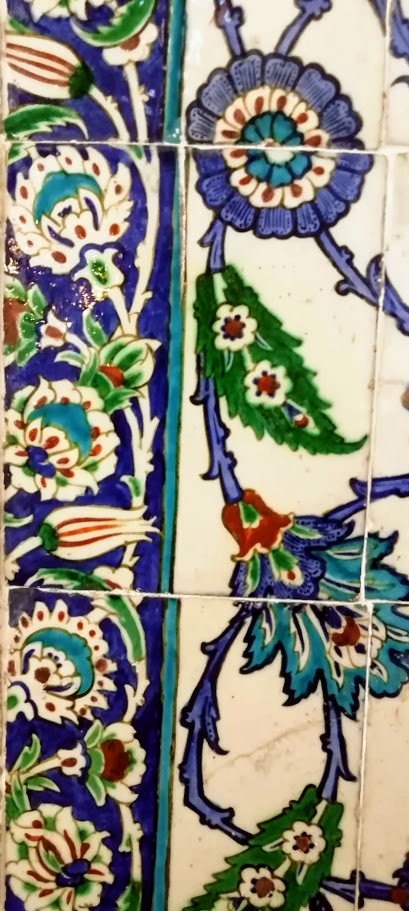Konark – The Temple of the Sun. Orrisa

The Sun Temple KONARK was built in 1250 by King Narsingha Deva to commemorate his victory over a Muslim invasion. Made with Black Granite and Sandstone it took 16 years to complete. Three Statues of Lord Surya, representing Dawn-noon-Dusk were carved of high quality Granite. The entire temple was 32% iron. It is believed to have a statue that floated, as it was made of iron and surrounded by magnets. I really liked the smooth amalgamation of Granite and Sandstone.
The entire temple is built in the form of a chariot, pulled by 7 galloping horses. These are believed to represent the 7 days of the week. of course the chariot must have wheels, the Konark has 24 wheels of 12 feet each. These represent the 12 months and 24 fortnights.




-

-

-

-

-

-

The gigantic statues of the Sun God are in Pure Black Granite. -

-

At eye level ,humans in the form of part snake are clearly visible -

-

Giant Lion Statues Crushing an elephant are a symbol of power.
-

-

-

-

-

The temple boasts of a large dance hall. Natya Mandapa. -

-

Rows of Elephants are seen at the base to represent the sturdy quality o the temple structure. -

Dance and Music were the major source of Entertainment. -

Panels showing different Cultures, Erotica and entertainment. -

Dance Poses are aligned with animals and instruments -

Photographs by Jyotika Karve
RAJASTHAN – Jaipur The Jaigarh Fort

The Jaigarh Fort is strategically situated at an altitude, on the Cheel Ka Teela (Hill of Eagles). This fort is a unified with the Amer fort by a long formidable wall , second only to the wall of China. The city has grown around the fort and Amer palace. The city formed by Raja Jai Singh and his descendants and enriched it over the centuries.
The two forts are connected by a subterranean passage and are considered to be the escape route for the royals during battle and invasions. Majestically towering over the Amer Fort it is a vantage point.



Of course this passage has been sealed for security reasons.
The fort seems austere compared to the Amer Fort. It had a Diwan- E – Aam ( Court to meet the general Public) and a Jenana Khanna ( Queens quarters). It is presumed that most guards were eunuchs, as there were very few doors, mostly curtains were used as dividers. These guards would spend hours in Jharokas (Balcony windows) overlooking the Queens gardens and report the gossip to the king.

The Water System of Jaipur
In the Jaigarh fort, great care was taken to ensure an abundant supply of water within the fort. Aqueducts, cisterns, tanks were dug and large and deep reservoirs, called tanks, were excavated in the solid rock to conserve the rain water falling during the rainy seasons. These waterworks were simply not dug here and there but they were dug after a detailed study of the topography of the place for domestic use and irrigational purposes.
The hydraulic systems of the Jaigarh fort are based on the principles of rainwater harvesting and water conservation. The whole mechanism of the system is comprised of collecting rainwater through aqueducts and carrying it to storage tank with the facility of cleaning the water and its storage in tanks which are provided with the technique of conservation of water having least pollution; it became operational due to gravitational force/gravity. Surprisingly this 18th century hydraulic innovation is based on the manipulation of geographical features of the area without using any mechanical and locomotive device.
INDIAN JOURNAL OF ARCHAEOLOGY VOL. 4/NO. 1/ January 2019-April 2019. Publisher: National Trust for Promotion of Knowledge Mode of Publication: Online (e-Journal) Source: http://www.ijarch.org


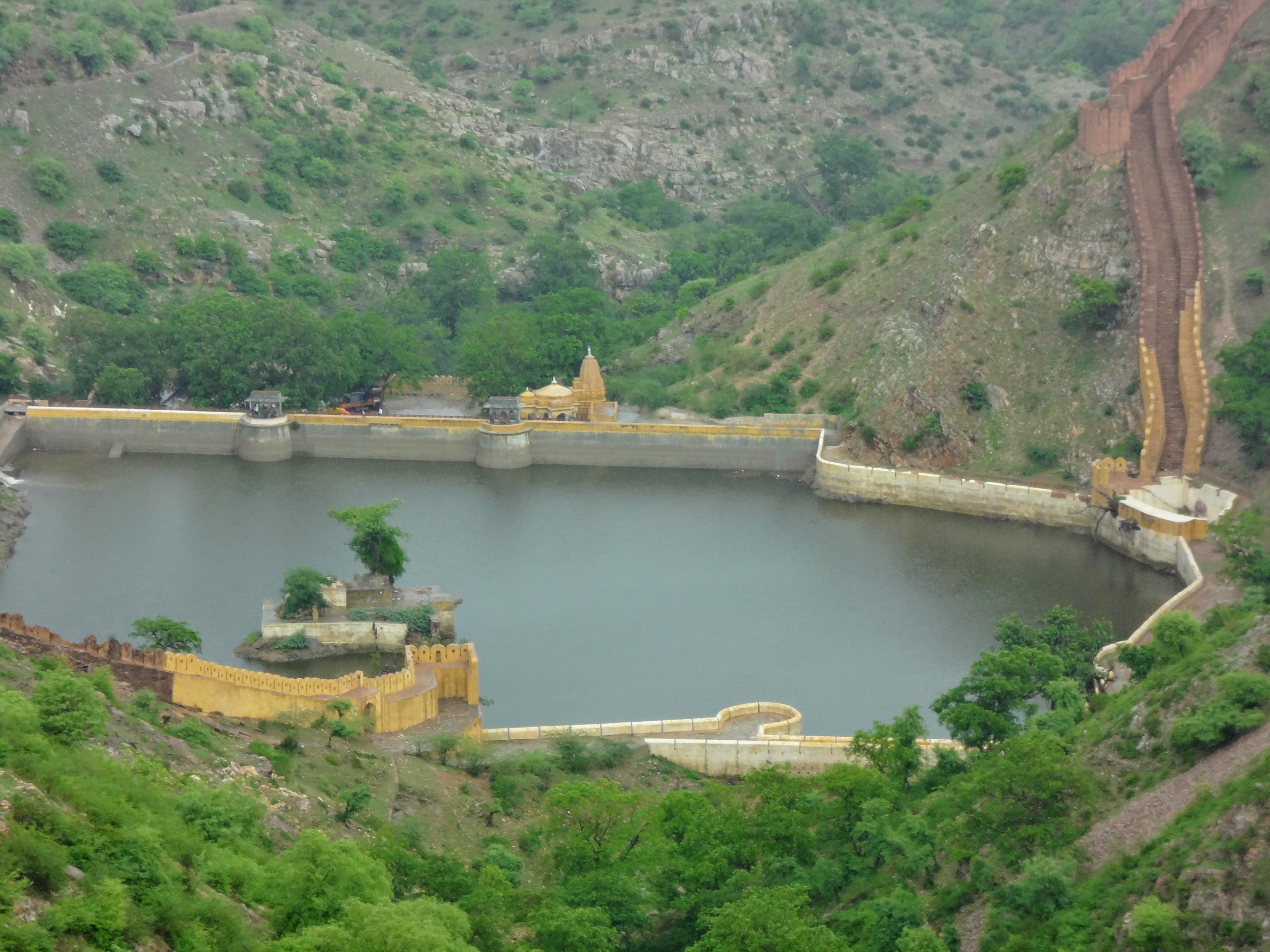

This fort has a complex water system. Rain water was harvested in structure made in the nearby catchments. Theses were then transported via canals on the west side of the fort. Three large underground tanks stored over 6 million gallons of drinkable water. These were the main water source for both forts.
The Charbagh Garden cover the water reservoirs and are the final place from where the water is supplied to the city of Jaipur and the Palace. These are cover with beautiful gardens for the pleasure of royalty.


|
https://en.wikipedia.org/wiki/Jaivana_Cannon
The Jaigarh Fort was the centre of artillery production for the Rajputs. It is now home to the JAIVANA CANON. Considered to be the largest canon in the world it was only fired once and has a range of 22 miles. One use requires 100 kgs of gunpowder and canon balls of 50 kgs each. During Emperor Shah Jahan reign, Jaigarh Fort became the worlds most efficient cannon foundries, because of the abundance of the nearby iron mines. The Rajput also built a large ingenious mechanical device that had a precision gear system driven by four pairs of Oxen, the device was used for hollowing out the cannon barrels |


The Jaigarh fort is famous for three things, its incredible water system, its foundry for cannon making and the hidden passage that connects the forts.
Photographs by Jyotika Karve except when mentioned otherwise.
CLIVEDEN HOUSE -LONDON2017

The season was perfect to visit The Cliveden House.

The typical English landscape opened its arms to welcome us to this Hunting Lodge built in 1666 by the 2nd Duke of Buckingham to entertain his mistresses and friends
Cliveden has been the home to a Prince of Wales, two Dukes, an Earl, and finally the Viscounts Astor. As the home of Nancy Astor, wife of the 2nd Viscount Astor, Cliveden was the meeting place of the Cliveden Set of the 1920s and 30s—a group of political intellectuals. – http://www.wikipedia.org

A large fountain is a visual treat at the end of a lime tree avenue that leads upto the Main House. The Shell Fountain called the “Fountain of Love” was an acquisition commissioned in 1897 by Lord Astor for this site. Sculpted by Thomas Waldo Story, (American, 1855–1915) in Rome.

It features a large Carrara marble shell supporting three life-size female figures attended by cupids.
The fountains has cupids on both sides
As we walk away from this mesmerising fountain we begin to enter the realm of Royalty and the Indulgence of Kings and queens of the past.


The water Tower / The clock Tower.
As a functioning water tower it still provides water for the house today. It is made in Roman cement like the rest of the house, and features four clock faces. In 1861, Henry Clutton added this 330 metre, or 100 foot clock tower. A 19th-century winged male figure Le Génie de la Liberté (the Spirit of Liberty) is seen atop. it is gilded with 2 layers of 23,5 carat Gold. It which holds the torch of civilisation in its right hand and the broken chain of slavery in its left. once you enter he House, it reminds one of the flamboyance and extravagance of royalty.
A walk through the interior reveals silent rooms, panelled halls and winding stairways.
Long corridors lined with gilded chest and lamps.

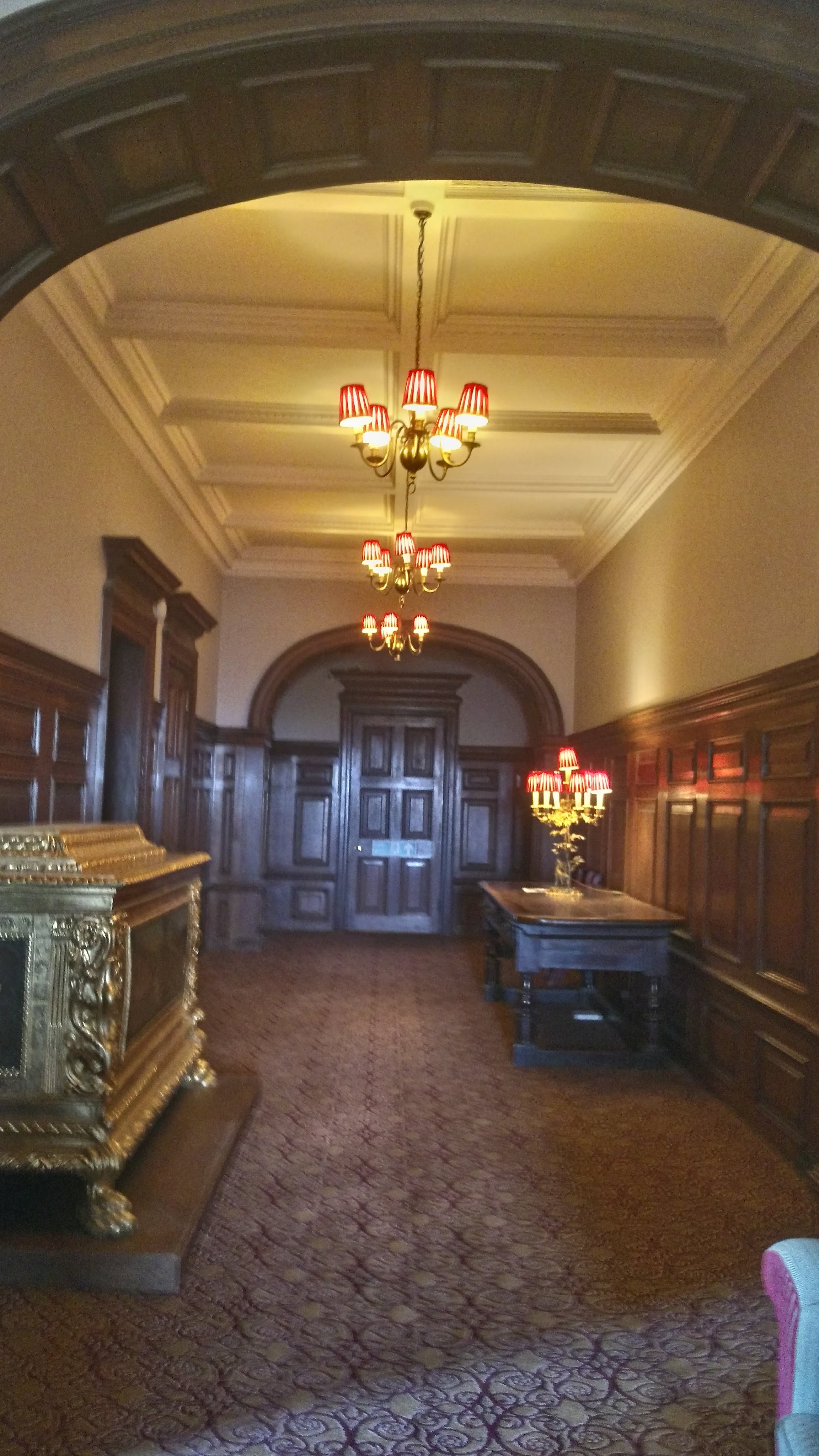
waiting area Nooks and corners with valuable paintings
Portraits of past royalty.
Terraces to have your morning tea and entertain.

Lawned upper levels to host private parties.

Strange niches in the house with multiple water outlets.

Fine tapestry on all the chairs, with arm rests carved beautifully.
Parterre. ( a level space in a garden occupied by an ornamental arrangement of flower beds)
The Duke commissioned both Charles Barry (who had rebuilt the mansion after the second fire) and John Fleming (the head gardener) to produce designs for a complex parterre of flower beds. Fleming’s design, which featured two sets of eight interlocking wedge-shaped beds, was chosen and is the template for what can be seen today. The beds were planted with a seasonal mix of bulbs, annuals and shrubs such as gladioli, hollyhocks, tulips, pansies and azaleas. Fleming pioneered this style of planting at Cliveden, which was later to be named “carpet-bedding.” – http://www.wikipedia.org.

The estate extends to 376 acres (1.52 km2) of which about 180 acres (0.73 km2) comprise the gardens, the rest being wood lands and paddocks. The gardens are listed Grade I on the Register of Historic Parks and Gardens.
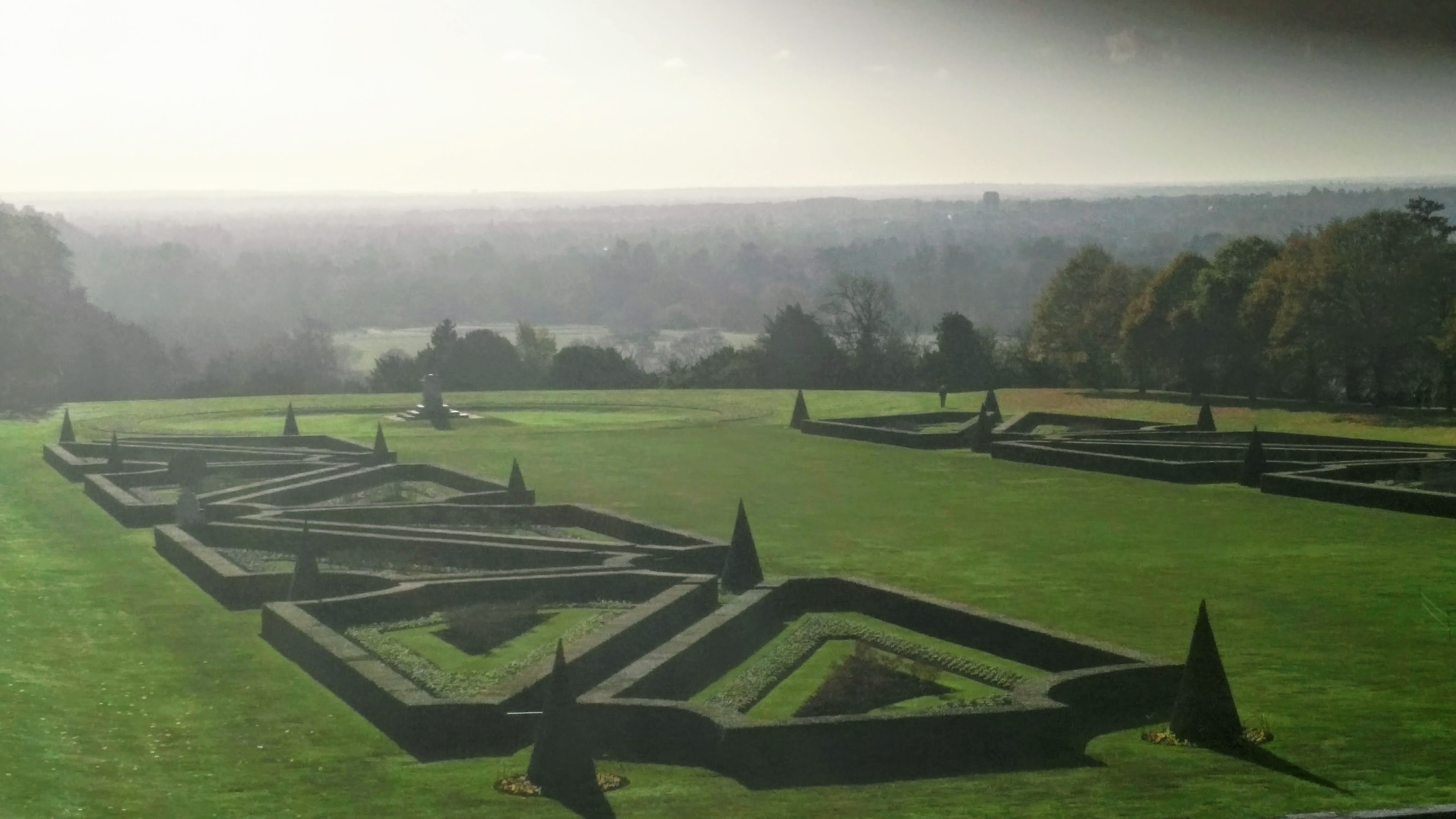
The parterre endured in this form until the mid 19th-century when the estate was owned by the Duke of Sutherland and by which time the garden had been neglected. It was described by the Duke’s son Lord Ronald Gower as “a prairie…a huge field of grass and wild flowers”
The House has priceless trapestry.

All photographs taken by Jyotika Karve.
Natural History Museum “Hope”- 2017
For years now I have been travelling around the world. What do I do when I get there? Look for Art.

Natural History Museum. The Blue whale exhibit. This exhibit was enormous. It featured a female blue whale called HOPE. It was exhibited as a symbol of humanity’s power to shape a sustainable future.
Date of experience: November 2017, reviewed on Tripadvisor :2 December 2017
Went to see “HOPE” the latest attraction of the Blue Whale. There are no words to describe the realisation one gets of the magnanimity the deep sea animal has. Its mere size is jaw dropping. The museum hosts interactive sessions, spaces for deeper study, pockets of memorabilia, cafes for wine and food and of course the venue is straight from a Harry Potter Book. Since it is so close to the V&A and the Science Museum, its totally worth spending the day exploring and enjoying both museums.

All photographs by Jyotika Karve
PEGGY GUGGENHEIM COLLECTION VENICE – September 2019
Before I reached the ticket counter to this enviable collection, I was ushered into a private garden that showcased her private collection even before I had entered her home. These are some of the artsy collection of Peggy Guggenheim without entering the house ,now a fabulous museum.


he Byzantine Marble throne in The Palace , now museum, Garden, It was one of Peggy Guggenheims favourite place to sit with her dogs and take photographs.
” I dedicated myself to my collection. A collection means hard work. It was what I wanted to do and I made it my life’s work. I am not an art collector. I am a museum.”
Peggy Guggenheim, Peggy Guggenheim and Her Friends, 1970-76





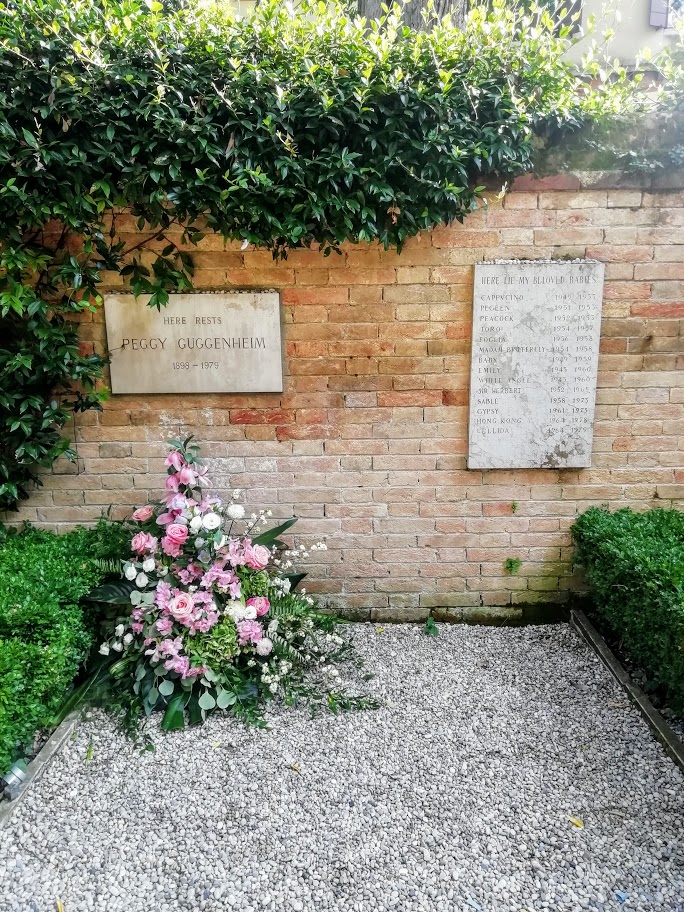
“Peggy died aged 81 on 23 December 1979. Her ashes are placed in a corner of the garden of her museum. Since then, under the oversight of the Solomon R. Guggenheim Foundation, the Peggy Guggenheim Collection has become one of the finest museums of modern art in the world.”https://www.guggenheim-venice.it/en/art/in-depth/peggy-guggenheim/about-peggy/






Greece .Unrecorded artist. Two Horses. Corfù . Stone. 115 x 125 x 56 cm
Peggy Guggenheim Collection, Venice (Solomon R. Guggenheim Foundation, New York)


Oil on Canvas

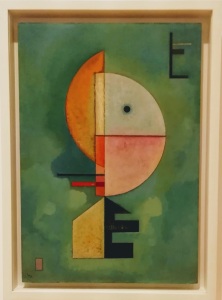








The paintings and sculpture are a very small part of the entire collection. There were masterpieces by Pablo Picasso and Andy Warhol, to name a few. These works of Art made a lasting impression on me. I marvelled at the mind of this very gutsy lady who lost her precious daughter at a young age and never stopped grieving. Yet her collection shows foresight and creativity. She was a genuine Philanthropist and Collector. I would visit this museum again and again and yet not have enough.
Appreciate and support Indian Artists on http://www.97artandideas.com
The photographs in this blog are the property of Jyotika Karve
Mosaic Magic – Turkey

Turkey is famous for its tile – making heritage. Iznik tiles are famous. Actually Iznik is a place near Istanbul, where this art actually started. Of course the tile making art has had many improvements over the years. Turkey however still promotes this art and is very proud of its artists. One must remember that the original mosaic of Turkey were part of the Byzantine empire and todays ‘Istanbul’ was ‘Constantinople’ of that era. This empire was Christian and later the Ottoman empire which occupied this area was of Muslim descent.







This is the famous Deesis mosaic in the south gallery of the Hagia Sofia. Emperor Michael VIII Palaiologos is probably responsible for theses rich gold mosaics. For a very long time ,places of worship like the Hagia Sofia were used as a church and a mosque. This type of image is referred to as a deësis (δέησις), which means “entreaty,” suggesting an act of asking, pleading, begging. However, this title does not actually appear in the mosaic, and scholars debate whether the Byzantines actually used this term much to describe such images. – http://www.khanacademy.org


-

Topkapi Palace Museum -

-

Haseki Hurrem Sultans Tomb -

-

-

Every time you enter a space of worship in Turkey, its a feast of mosaic colours. The brilliant blues and incredible indigo merge with the gorgeous greens to present an artwork in ceramic wonder.
Photographs by Jyotika Karve Sept 2019
Chowmahalla Palace Hyderabad

-

The Grand windows on the Exterior. -

Detail of the window frames -

-

The Garden view of the Palace
A visit to Hyderabad immediately takes you into the world of Nizams and Royal food. Besides, Biryani and Bakery products,the Palaces of the Nizams are always a memorable thing.
Chowmahalla Palace is one such place. Chowmahalla actually means 4 palaces. Chow(four) , Mahal (Palace). The construction of this palace was started in 1750 and completed between 1857 and 1869. Belonging to the Asaf Jahi Dynasty this grand structure was built by Nizam Salabat Jung. Meant mainly for ceremonial purposes, this palace is a Must-Visit.



The Nizam were of Muslim lineage. It was customary for the women to be in “Parda” – covered from head to toe. They lived in a separate part of the Palace called “Janana Khana” – women’s section. These large windows would probably have elegant embroidered curtains through which the many queens and consorts could view the ceremony.
The Palace is large and would take over half the day to see completely. The many collections including the vintage cars are a novelty. The photo gallery brings to life the lifestyle and richness of the Hyderabadi royalty.
Photographs by Jyotika karve
Talegaon’s Silent Stones. INDURI FORT

Talegaon, an industrial town on the outskirts of Pune, Maharashtra. Definitely not known for its rich heritage, yet is host to a fort. A land fort, built on the bank of a small river, completely neglected. A little research told me it is an 18th century fort. Definitely not grand but a part of our history, so I felt very sad to see it in this state. Built by Sarsenapati Khandojirao Yesajirao Dabhade in the year 1720-21. India is punctuated with forgotten structures of historical value. This being one of many.

It had a grand doorway that showed signs of a missing door that would once have guarded it against enemies. There is a temple inside and nothing more. The formidable fort walls now protect nothing but a dilapidated mint factory. I wondered, how much of royalty had this fort see? Why is it being neglected? Why are the stones silent? Who should they speak to? …what will they say? I wonder!

#fort #maratha #marathaempire #fortsofindia #fortsofmaharashtra #18thcentury #indianhistory #heritagedesk #paragkarve #mumbaiart #architecture #97artandideas #silentstones
Photographs: Jyotika Karve
Skywalk, Pelling – Sikkim Feb 2021
Skywalk – A glass bridge built at a Buddhist temple that allows visitors to get a panoramic view of the mighty Himalayas. the glass floor of the bridge allows one to realise the height of the gorge under your feet. It is the ideal place to view the Kanchanjanga, if one is lucky and the peak is not overcast. The steps leading up to the temple seem steep but easily conquered. Alternatively there is a ramp that is easier to accomplish. Blessed with ample parking space and facilities for tourists. There is a ticket to visit this area.
-

Skywalk of Sikkim




The Temple :- Once at the temple, the view is amazing. The temple is full of large Tangka frescoes however these are sadly interrupted by a spiral walking ramp. It would have been wonderful to have some kind of plaque that explained the different paintings and frescoes that told stories of the Buddha. From the crowd it was very evidently a popular tourist attraction. Photography is prohibited.

Art of Odhisa



My India, where people say foreigners have to tread with caution. My India, where women are not safe and where outsiders are harassed. Thats what I always get to hear whenever I travel .Thats not true at all. In fact, the following episode proves my point.
Mom and I travelled to a small Artist Village, from Bhubaneshwar, near Puri , called Raghurajpur . A village that floods every Monsoon. It has small houses built for Artist families, an effort by the government, to promote the traditional arts and crafts of the Village. Here elders have officially appointed a RAKSHAK (protector) to shadow tourists. Sounds sinister? However hear me out. These “protectors”are selected from the youth of the village and accompany visitors into artists homes. They are discreet and one hardly notices their presence since the merge with the locals. They ensure that the visitor is not hassled, or that the artist family is not cheated. He sits in a corner discreetly, helps in packing, thanks you for your visit and leaves with a smile. I was genuinely impressed and was wondering why this idea has not been adopted by other states and countries.
INCREDIBLE INDIA
Kashmir..before Kashmir 2019
Srinagar 9th March 2018 – 11th March 2018

Completely on a whim we decided to go to Srinagar for the weekend. We are members of Club Mahindra, fortunately their houseboat property was available. We reached late evening and though we were prepared about the weather. The chill factor was a shocker!. An early sunset ushers in the sharp drop in temperature and that was harsh. An hour ride in a shikara(boat), on the calm lake was welcome and of course, the pleasure was coupled by drinking warm kehwa(cinnamon tea laced with saffron and almonds).The chill was unbearable.

The gentlemen looking after us on the houseboat started the fire in a Bhukara (a crude closed hearth with a small chimney). That was a relief.
Each room had one, which was started up just after dinner and before bedtime. Asthma patients, senior citizens and infants should be very careful as these room warmers can get very hot and often make the rooms stuffy. Always enquire about the heating and food in advance. Some houseboats have tacky rooms, bad interiors and very expensive food. Please check the rooms before checking in.
Be warned – the peddler of saffron, jewellery, dry fruits, seeds and all sorts of wood carvings, are a real problem. They punctuate the entire day with conversations about their merchandise and are difficult to ward off. Very often they cheat on the price and heavy bargaining is expected. Every guide, boatman or houseboat host has a commission on every sale. Always buy from authorised showrooms that have printed prices and give you a bill.
Do visit Gulmarg, Sonmarg, Pehelgam for their scenic beauty and formidable mountains. The Himalayas are a treat beyond words, especially since they were snow covered.
Beware of the horsemen who can quote any price for any distance. Talk to your transport driver for tips on pricing.
Wear correct footwear. Snow shoes, or shoes that have non-slip soles, snow jackets are necessary for 80% of the year especially since its almost certain that you will encounter snow.
Layering your clothes and a scarf/muffler /shawl is surely sensible. A cap to cover your ears, socks, thermals and gloves are a must.
Staying at a houseboat on Dal lake means getting in and out of Shikaras or row boats. Senior citizens and children should be careful. The boatmen are the most friendly and helpful people. They transport people and luggage with amazing efficiency. They are the lifeline of transport on the lake.
So look into the options of staying overnight at Gulmarg ( for snow) Pehelgam (for scenic beauty) and Sonmarg (for serenity).
Srinagar is a Must Visit. Go prepared and enjoy the unparalleled natural beauty of the Himalayas.
